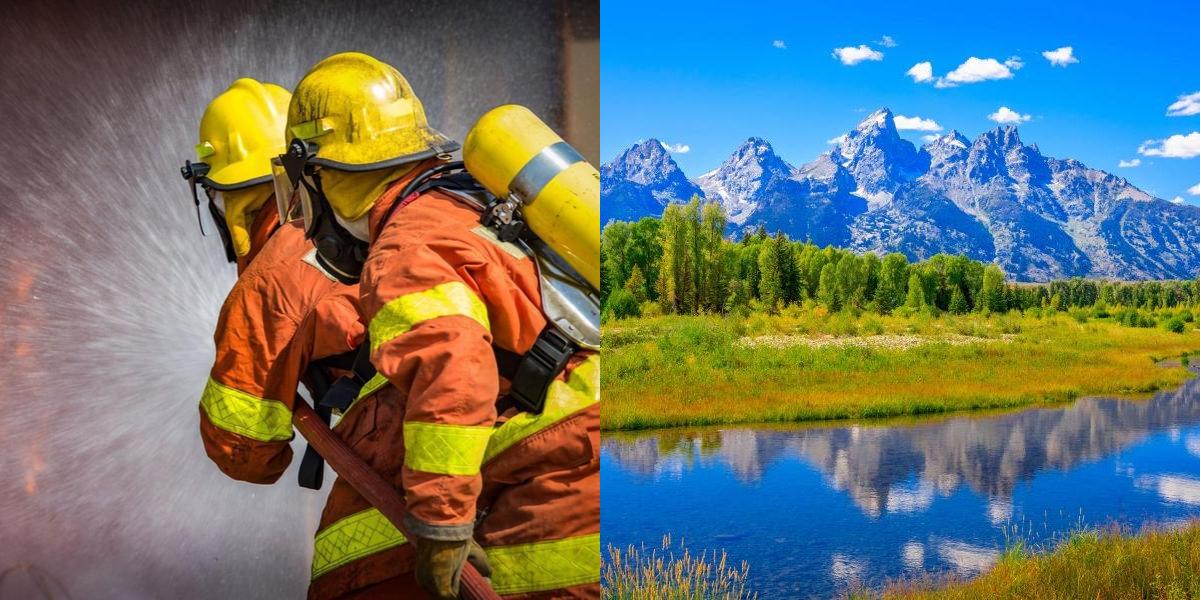How to Become a Firefighter in Wyoming

Being a firefighter is a noble and challenging profession that requires bravery, physical fitness, and the ability to stay calm under pressure. If you are interested in pursuing a career as a firefighter in Wyoming, here are the key points you need to know:
How do I get a job as a Firefighter?
Getting a job as a firefighter can be a competitive process, but with the right preparation and determination, you can increase your chances of landing your dream job. Here are some steps to help you get a job as a firefighter.
Step 1: Gain Relevant Experience
Before applying for firefighter jobs, it's important to gain relevant experience that will set you apart from other applicants. Consider volunteering as a firefighter or joining a local fire department as a reserve or auxiliary firefighter. This will give you hands-on experience and allow you to build relationships within the firefighting community.
Step 2: Network
Networking is crucial in any job search, and the firefighting industry is no exception. Attend job fairs, career expos, and networking events to connect with professionals in the field. Join professional organizations such as the International Association of Firefighters (IAFF) to access networking opportunities and resources.
Step 3: Prepare a Strong Resume and Cover Letter
Your resume and cover letter are the first impression you make on potential employers, so it's important to make them stand out. Highlight your relevant training, certifications, and experience in firefighting or related fields. Emphasize your physical fitness, problem-solving skills, and ability to work well under pressure.
Step 4: Ace the Interview
Once you've submitted your application, you may be invited for an interview. Prepare for the interview by researching common interview questions and practicing your responses. Highlight your skills, experience, and passion for the job. Be sure to dress professionally and arrive on time for the interview.
Step 5: Stay Persistent
Finding a job as a firefighter may take time and persistence. Don't get discouraged if you don't receive immediate offers. Continue to apply for firefighter jobs, network, and improve your skills and qualifications. Consider taking additional training or certifications to make yourself a more competitive candidate.
Career Paths and Opportunities after Becoming a Firefighter
Once you have become a certified firefighter and secured a job in the field, there are various career paths and opportunities you can explore. Here are a few options to consider:
-
Fire Inspector: Fire inspectors are responsible for inspecting buildings and ensuring compliance with fire codes and regulations. They may also investigate the cause of fires and provide recommendations for prevention.
-
Fire Investigator: Fire investigators are trained to determine the cause and origin of fires. They work closely with law enforcement agencies and insurance companies to gather evidence and conduct investigations.
-
Fire Captain: After gaining experience as a firefighter, you may have the opportunity to advance to a leadership position such as a fire captain. Fire captains are responsible for overseeing a team of firefighters, coordinating emergency response efforts, and ensuring the safety of their crew.
-
Fire Training Officer: If you have a passion for teaching and training, you may consider a career as a fire training officer. Training officers are responsible for designing and implementing training programs for firefighters, ensuring they are equipped with the necessary skills and knowledge to perform their duties.
-
Emergency Medical Technician (EMT): Many firefighters are also trained as EMTs or paramedics. This additional certification allows them to provide emergency medical services in addition to firefighting.
-
Specialized Rescue Teams: Some firefighters may choose to specialize in specific rescue operations, such as urban search and rescue, hazardous materials response, or technical rescue. These specialized teams work in high-risk situations and require additional training and certifications.
How Much does a Firefighter Make?
The salary of a firefighter can vary based on factors such as location, experience, and the size of the fire department. According to the Bureau of Labor Statistics, the median annual wage for firefighters was $50,850 in May 2020. The lowest 10 percent earned less than $25,850, while the highest 10 percent earned more than $94,720.
For entry-level firefighters, the starting salary can be lower than the median wage. However, as they gain experience and move up the ranks, their salary can increase significantly. It's important to note that these figures are just averages, and the actual salary can vary depending on various factors.
Final Thoughts
Becoming a firefighter and obtaining your firefighter certification is a challenging but rewarding journey. It requires dedication, physical fitness, and a passion for helping others. By following the steps outlined in this article, you can increase your chances of becoming a certified firefighter and finding a job in the field. Remember to stay persistent, continue learning and growing, and never lose sight of the importance of your service to the community.
Exploring diverse professional options? Dreambound has comprehensive guides to assist you in making well-informed decisions. Take a look at these resources:

Alyssa Jane is part of the customer success team at Dreambound. She works with students, training providers, and employers, helping them have a smooth customer journey. She is also an ESL tutor and Licensed Psychometrician. She is fond of traveling, photography, and discovering new restaurants.




